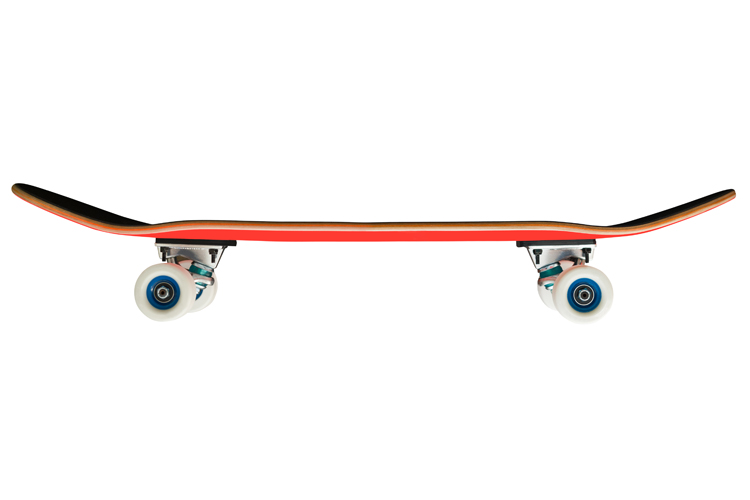The popsicle skateboard is the standard design for contemporary sidewalk surfing decks. Here's what you should know about today's board template.
The modern skateboard was invented in the 1950s in California. However, since then, its design and parts have evolved and changed through time.
It all started with a simple and plain wooden board with rollerblade wheels bolted underneath the deck.
Sidewalk surfing pioneers used to shape their own boards before the first commercial skateboards hit the market around 1958.
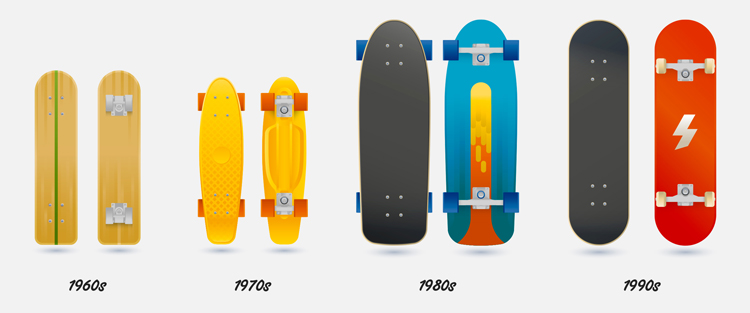
The initial template was rough, flat, and simple, and the boards featured metal wheels that would make the ride tricky and hard to control.
Eventually, longboard surfboards, with their rounded noses and square tails, were ported into small-scale skateboards equipped with clay wheels.
Some of the most famous models were the Roller Skater, the Nash Shark, and the G&S pintail skateboards.
That was the late 1950s and 1960s, a skateboard era beautifully portrayed in the timeless movie "Skaterdater" directed by Noel Black.
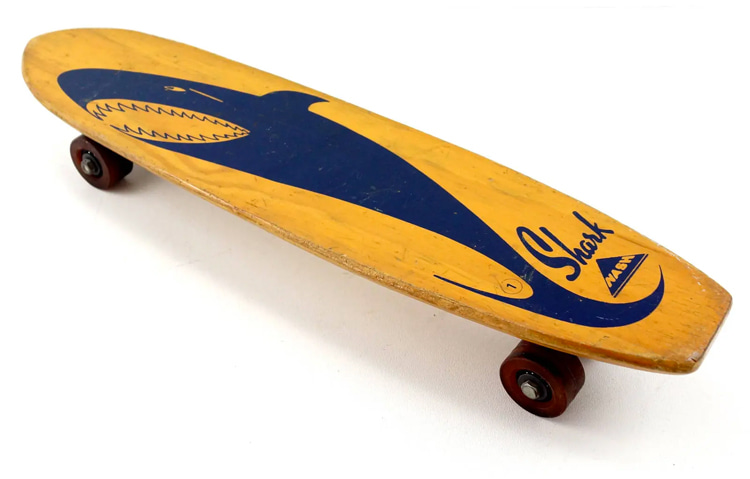
The Evolution of Skateboard Templates
With the 1970s urethane wheel revolution, skateboards - and skateboarding - changed forever.
A better wheel formula also brought innovative and groundbreaking truck systems and materials that forced decks to adapt to increasingly high-performance riding and disciplines.
Examples of these shapes include the Banana board and the Road Rider Cruiser.
By the time skaters ollied into the 1980s, the skateboard already featured a kicktail, which was the answer to the growing number of technical tricks.
The patent for the skateboard's bent-upward double kicktail was granted to Larry Stevenson in February 1971.
Today, he is still regarded as one of the godfathers of skateboarding.
The 1980s also brought the side rails, an innovation that helped riders pull off complicated maneuvers on vert ramps and the coping of bowls.
Simultaneously, board shapes evolved to fishtails or decks with a rocket form (narrower in the center) and two-part grip tape.
One of the most dramatic changes in skateboard design occurred in the 1990s with the introduction of the so-called popsicle shape.
The first examples are the early Ed Templeton New Deal skateboards, which were more straightened on both sides and had a more pronounced nose.
Rodney Mullen's last 1990 freestyle decks for World Industries also looked almost similar to what the popsicle skate is today.
By 1995, and with the advent of the X-Games, the skateboarding industry had made it the standard deck outline.
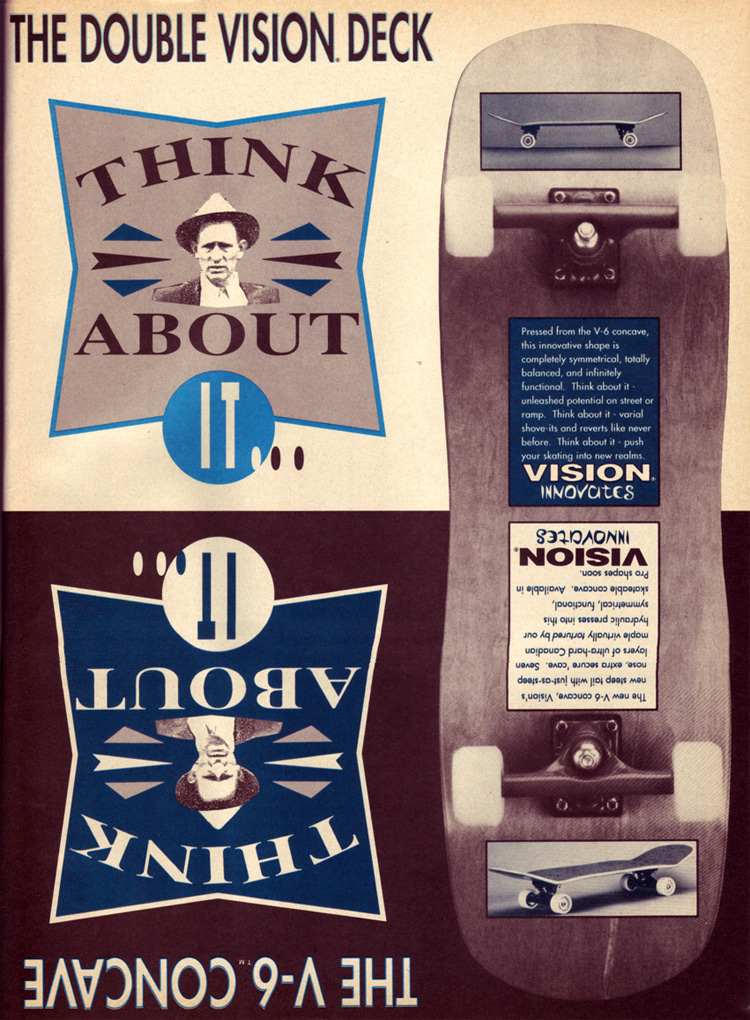
Popsicle Skateboard: Design and Features
The popsicle skateboard is a symmetric board template featuring identical concaved nose and tail designs, i.e., two kicktails.
The popsicle deck is the answer to the challenges and requirements of street and vert skating, which got riders to develop switch stances.
With an overall outline that breathes freestyle skateboarding, the new deck has straight sides for rail tricks and rounded ends for flip tricks.
Its name comes from the birchwood stick used in colored, flavored ice creams, also known as popsicles.
The ice pop concept and brand Popsicle were actually started in 1905 by Frank Epperson, an 11-year-old who worked as a lemonade salesman.
The popsicle skateboard has become the standard deck shape for park and street skating and is also referred to as a twin-tip.
It is smaller and lighter than almost all types of skateboards and often features small-sized wheels.
The modern popsicle deck can be harder to ride for beginner skaters because it is highly responsive to subtle body movements.
But today's standard deck is the result of an evolutionary process.
The groundbreaking design that revolutionized new school skateboarding began to take shape in 1989 with the symmetrically steep double-kick The Double Vision Deck by Vision.
Mike Vallely's World Industries Barnyard, featuring a shorter-tail-than-nose and a mellower kick, also contributed to the future industry standard - the popsicle skateboard.
Both models had almost square ends.
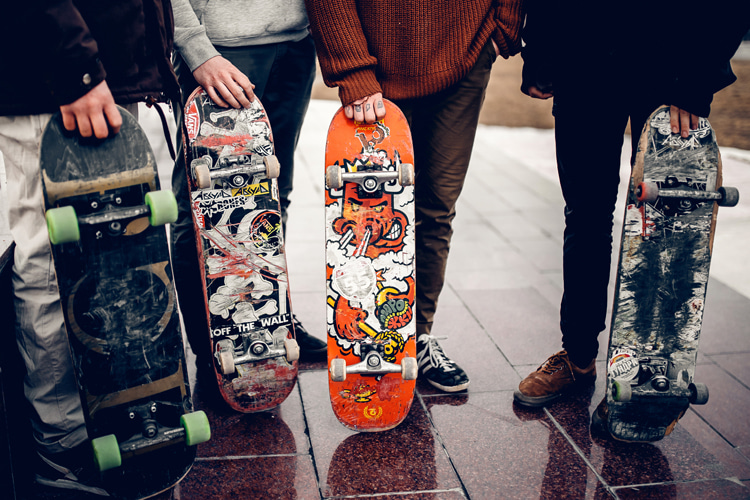
A Universal Standard Deck Shape
Anatomically speaking, the popsicle skateboard hasn't changed much since it was presented to the world in the 1990s.
It is available in several sizes, but most models are 30-34 inches long and 7.25 to 9 inches wide and feature a shorter wheelbase.
In the 21st century, they gained deeper concaves, but the overall outline remained mostly unchanged, i.e., largely symmetrical and relatively narrow width.
Because they're generally used for tricks, popsicle skateboards are constantly under extreme stress.
As a result, they might be damaged, worn out, or even break more often than other skateboard types, even though they're sturdy and durable.
A popsicle skateboard deck ranges from $50 to $150.
You might pay more or less depending on the quality of the seven layers of maple wood and the construction/molding processes and techniques involved.
